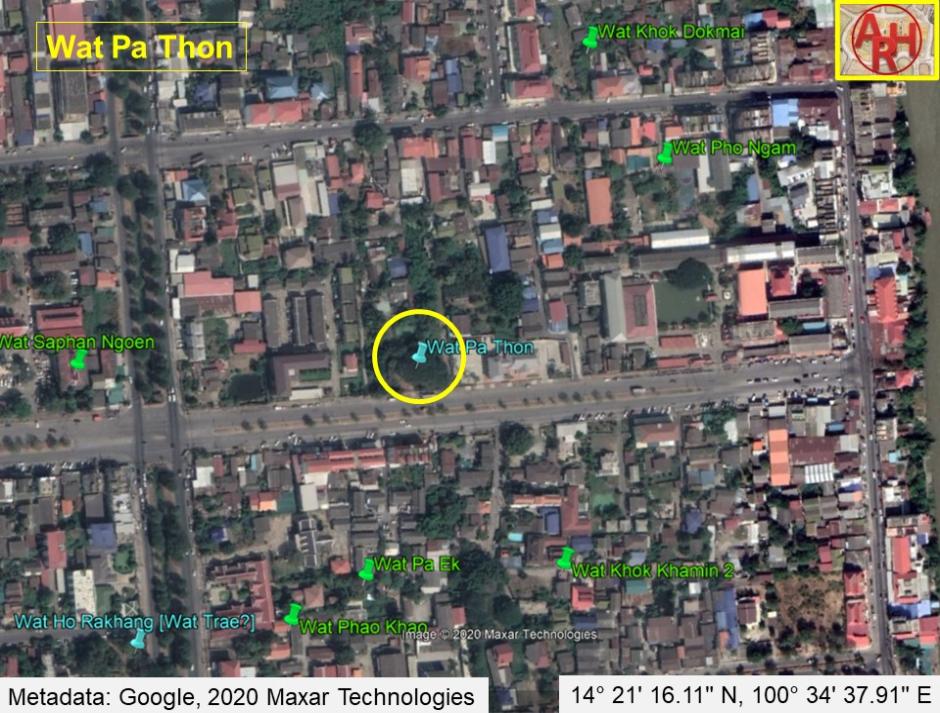
| Wat Pa Thon or the Monastery of the Thon Quarter was located on Ayutthaya's city island, outside the Historical Park in the east of the city, at present Ho Ratanachai Sub-district. Pa Thon was an area in Ayutthaya where the thon - a type of Thai drum - and other musical instruments were made. [1] The thon is a Thai goblet drum, a single headed drum. The head is around 20 cm in diameter. The drum has a ceramic or hard wooden body. The thon lies on the player's lap and is played with the right hand. The drum gives a low pitch. It is often played simultaneously with another instrument called ramana. The latter is held in the left hand and gives a high pitch. Together they are known as thon-ramana and played as a pair in Central Thai classical music, usually in the Khruang Sai Ensemble, a stringed ensemble. (1)[2] The monastery was situated between Khlong Nai Kai (present Khlong Makham Riang) and the Front City Canal (present Pa Sak River). To its north stood Wat Khok Dokmai, while in the south was Wat Khok Khamin. Wat Saphan Ngoen was situated in the west, opposite Khlong Nai Kai. Pratu Jao Jan, a gate in the city wall, was located to its east. There is still some brickwork visible of the monastic structure. The site has been restored after the flood of 2011. Historical data about the monastery and its construction are unknown. The site is indicated on a 19th century map under the name of Wat Pa Tho and on Phraya Boran Rachathanin's (PBR) map drafted in 1926 as Ban Pa Thon and as thus not referring to a temple. Following PBR the structure stood along a brick road, an extension of the Pa Thon Rd. A few meters south of this brick road, there must once have been a canal, which was part of a larger waterway connecting the Rear Palace with the Front City Canal. The remaining brick mound of Wat Pa Thon is located in geographical coordinates: 14° 21' 16.11" N, 100° 34' 37.91" E. Footnotes: (1) De La Loubère wrote the following about this instrument is his "A New Historical relation of the Kingdom of Siam": "The people do also accompany the voice in the evening into the courts of the houses, with akind of drum called Tong. They hold it with the left hand, and strike it continually with the right hand. 'T is an earthen bottle without a bottom, and which instead thereof is covered with a skin tyed to the neck with ropes." References: [1] Internet source http://www.ayutthayastudy.org retrieved on 16 July 2010 - Patone Road Or Dejavudh Road? by Patt Taengpun. [2] Internet source www.culture.go.th/research/musical retrieved on 16 July 2010. [3] Internet source www.thaimusic.net retrieved on 16 July 2010. |
| Text, photographs & map by Tricky Vandenberg - July 2010 Updated October 2010, February 2015 |
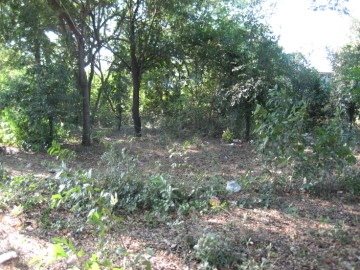
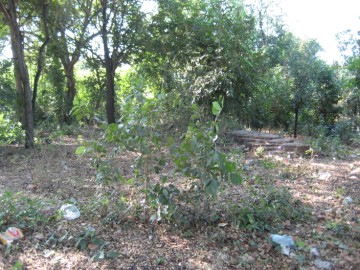
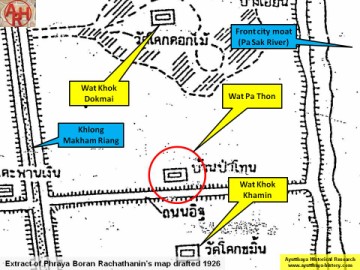
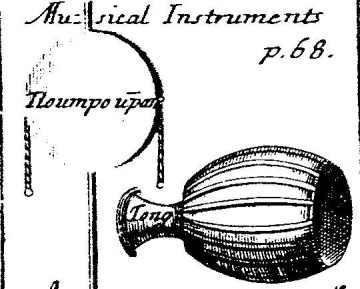
| (Tong or Thon - Siamese music instrument) |
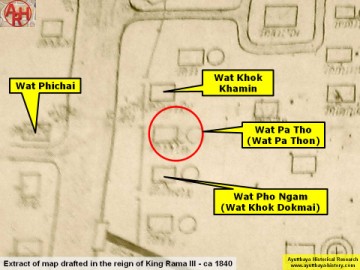
| (Site view of Wat Pa Thon) |
| (Site view of Wat Pa Thon) |
| (Detail of a 19th century map - map is orientated S-N) |
| (Detail of Phraya Boran Rachathanin's map - Anno 1926) |
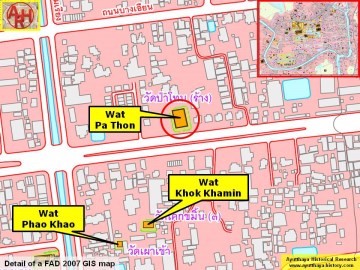
| (Detail of a 2007 Fine Arts Department GIS map - Courtesy of the Fine Arts Department - 3th Region) |
| WAT PA THON (วัดป่าโทน) |
